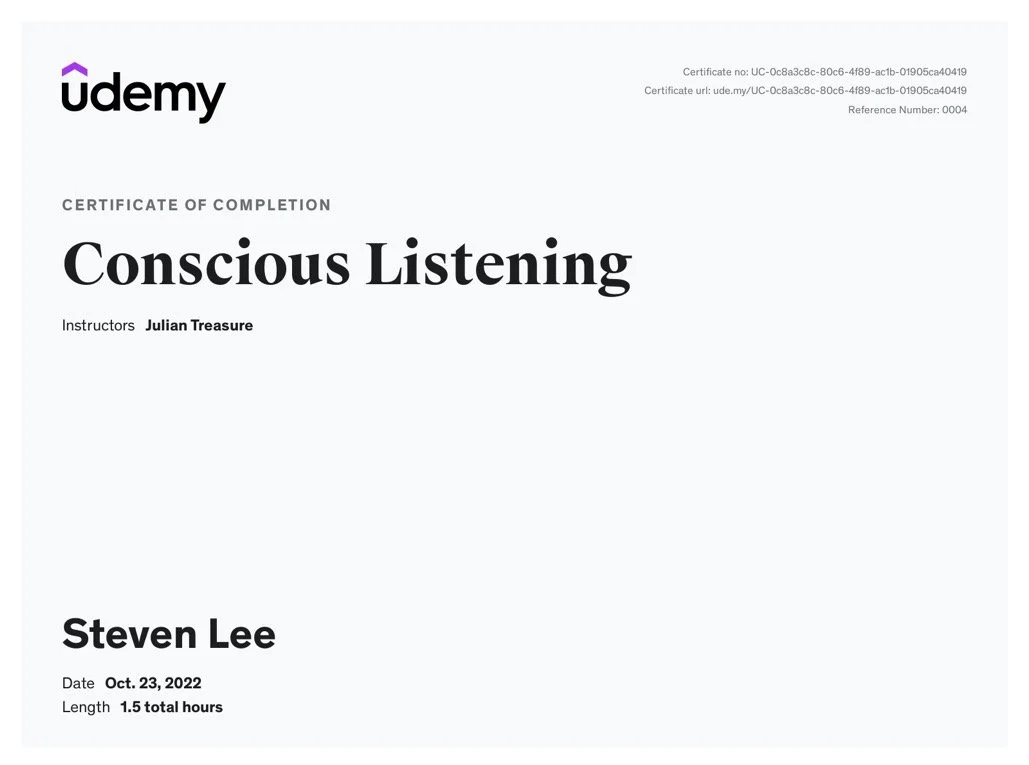3.2. Making meaning from sound
Listening is a skill, something one must work at. It’s also a dying skill in the modern world for many millions of people.
LISTENING > is making meaning from sound.
To listen is to pay attention to sound or action.
A purely mental process. A part of our mapping of our reality.
HEARING > a PHYSICAL process, where sound touches our eardrums, and turns into vibration and fluid in our inner ear, becoming an ELECTRICAL process where that vibration is CHEMICALLY transmitted into neurons which fire off in our brains.
Hearing, or auditory perception, is the ability to perceive sounds through an organ, such as an ear, by detecting vibrations as periodic changes in the pressure of a surrounding medium.
We have four ways of communicating >
READING: the process of taking in the sense or meaning of letters, symbols, etc., especially by sight or touch.
WRITING: the activity or skill of marking coherent words on paper and composing text; … a medium of human communication that involves the representation of a language through a system of physically inscribed, mechanically transferred, or digitally represented symbols.
SPEAKING: the action of conveying information or expressing one's thoughts and feelings in spoken language.
Hailey, Logan. 14 Tips On How To Improve Speaking Skills (Speak Like A Pro!) (scienceofpeople.com)
LISTENING: to give attention to sound or action.
ABOUT 60% of our time is spent LISTENING. But we only retain only about 1 out of every 4 words we hear, or about 25% of the content we hear.
Once upon a time, most of our knowledge came through listening.
Tools we use to extract meaning from noise…
PATTERN RECOGNITION: …occurs when information from the environment is received and entered into short-term memory, causing automatic activation of a specific content of long-term memory. An early example of this is learning the alphabet in order. When a carer repeats ‘A, B, C’ multiple times to a child, utilizing the pattern recognition, the child says ‘C’ after they hear ‘A, B’ in order. Recognizing patterns allows us to predict and expect what is coming. The process of pattern recognition involves matching the information received with the information already stored in the brain. Making the connection between memories and information perceived is a step of pattern recognition called identification. Pattern recognition requires repetition of experience.
DIFFERENCING: involves our brain ignoring things that don’t change much and focus on things that do change… this can involve SOUND MASKING, which is the inclusion of generated sound (commonly, though inaccurately, referred to as "white noise" or "pink noise") into an environment to mask unwanted sound. It relies on auditory masking. Sound masking is not a form of active noise control (noise cancellation technique); however, it can reduce or eliminate the perception of sound. Sound masking is applied to an entire area to improve acoustical satisfaction, thus improving the acoustical privacy of the space. This can help an individual focus and thereby enhance productivity… NOTE: Treasure isn’t a fan of using white or pink noise, as a sound researcher he finds it fatiguing - and prefers natural sounds such as birdsongs, rainfall, or wind in the leaves to help enhance the soundscape.
What You Need to Know About Sound Masking | Soundproof Cow
3.3. We are losing our listening
There are many things today that are passed on by recording things - by writing, audio recording, and video recording > making it easy to revisit content. Once upon a time, if you missed it, you missed it. Recording has reduced the premium found in careful listening.
Our modern Western society has developed the soundbite, often sensationalized, which has degraded our ability to listen to well-developed, even subtle arguments. This has become a part of a move towards a directed, aggressive style of living. Away from the balance of nature with YIN (female, feminine, dark, yielding, the moon, soft), and YANG (male, aggressive, the sun, heat, light) being in balance. But in the western world, we’ve moved towards the YANG (telling) as opposed to the YIN (listening). We are drowning in NOISE.
We have developed ways to escape noise, such as headphones > which can cause NOISE INDUCED HEARING LOSS (NIHL) largely because of headphone abuse, as opposed to say going to loud concerts. You don’t notice this because it’s gradual. There’s no way to retrieve damaged hearing. Headphones also deny us the ability to hear the soundscape of our environment - such as other people, or even on-coming cars or trains (headphones create PODestrians), as well as the peaceful sounds of nature. We are all in our own little auditory worlds when we wear headphones. This can be desirable sometimes, but there are downsides.
Text messaging and social networking are other forms of technology that have impacted our ability to listen. These do contain forms of written speech, but it’s not a conversation because you can’t hear the tone of voice imbedded in text messages, and there is no synchronous communication in the form of immediate replying. Also >>> Social networking friends aren’t really friends; they aren’t deep friendships and can be more superficial. With social networking, Treasure notes we are more attuned to be personal broadcasters, where it’s more about what one is putting out there, and less about listening to what’s coming back unless it’s comments about what’s put out there - which isn’t really listening or engaging in dialogue.
